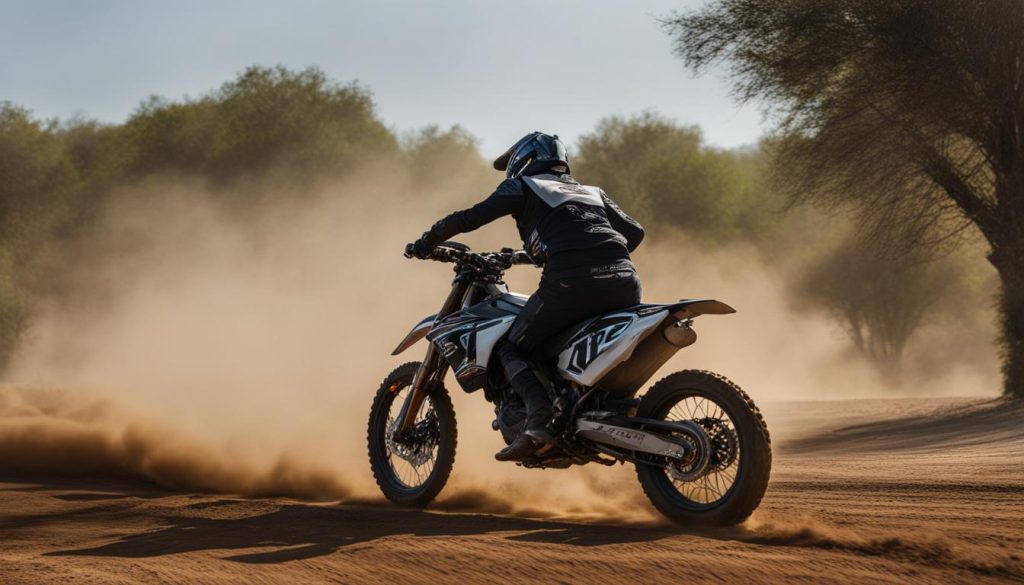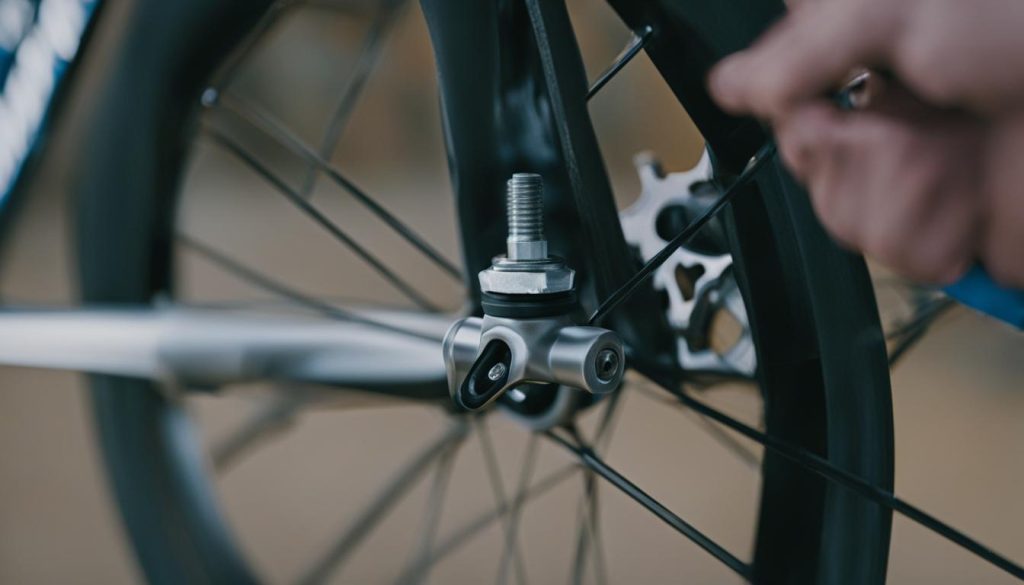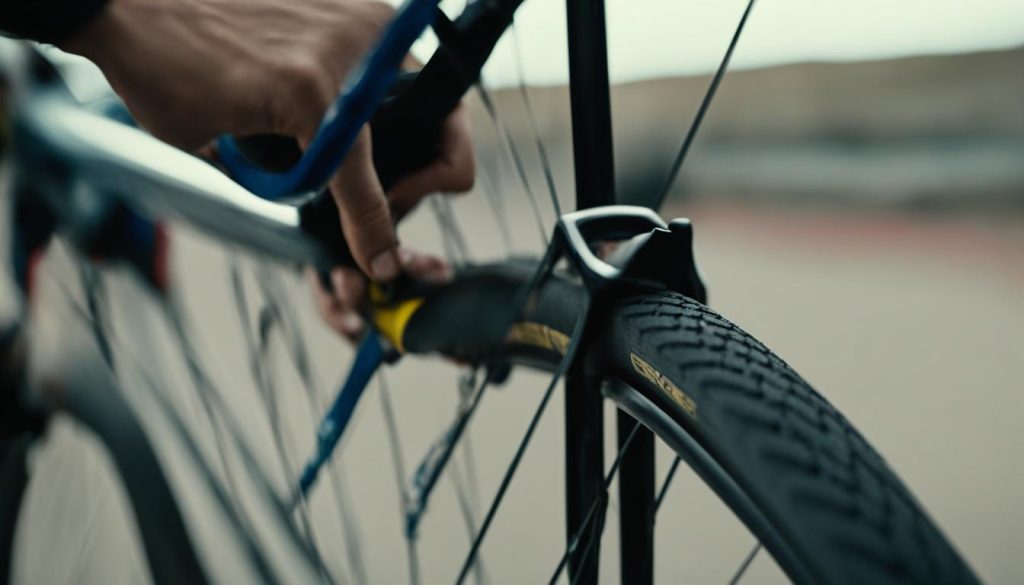Are you ready to experience the thrill of off-road riding on a dirt bike? Whether you’re an aspiring rider or a seasoned pro, this guide will provide you with essential tips and techniques to help you navigate the trails with confidence and skill.
From mastering the basics of dirt bike riding to advanced tips for off-road adventures, you’ll find everything you need to know right here. So, let’s gear up and get started on this exciting journey of dirt bike riding!
Key Takeaways
- Learning how to ride a dirt bike is an exciting and challenging adventure.
- Proper safety gear is essential to ensure your well-being on the trails.
- Mastering the basics of dirt bike riding is key to building a solid foundation of skills and techniques.
- Advanced tips for off-road riding can help you navigate different terrains and maintain control at higher speeds.
- Remember to prioritize safety and always practice your skills to improve and enjoy your dirt bike riding experience.
Getting Started: Essential Dirt Bike Riding Gear
When it comes to dirt bike riding, safety should always be your top priority. The right gear can make all the difference in preventing injury and ensuring an enjoyable ride. Here are the essential items you’ll need:
| Gear | Description |
|---|---|
| Helmets | A properly fitting helmet is essential to protect your head from impact in case of a fall or accident. Look for a helmet with a Department of Transportation (DOT) certification. |
| Goggles | Goggles protect your eyes from dirt, rocks, and debris while riding. Look for a pair with a comfortable fit that won’t dig into your skin. |
| Gloves | Gloves provide grip and protect your hands from blisters and cuts. Look for a pair with reinforced palms and proper ventilation. |
| Boots | Sturdy boots that cover your ankles protect your feet and prevent twisting or spraining your ankle. Look for boots with good grips on the soles. |
| Protective Clothing | Wearing proper protective clothing can help reduce the risk of injury in case of a fall. Look for clothing that is durable, breathable, and fits well. |
It’s important to keep in mind that not all gear is created equal. Quality gear may be more expensive, but it’s an investment in your safety. Don’t skimp on gear!
Additional Dirt Bike Safety Tips:
- Inspect your gear before every ride to make sure it’s in good condition.
- Dress appropriately for the weather and bring extra layers in case the temperature changes.
- Avoid wearing loose clothing or jewelry that could get caught in the bike.
- Never ride without a helmet.
- Always wear goggles to protect your eyes from debris and bugs.
- Wear gloves and boots that provide protection and grip.
Mastering the Basics: Dirt Bike Riding Techniques
Now that you have the proper gear, it’s time to learn the fundamental dirt bike riding techniques. As a beginner, you might find it overwhelming, but don’t worry; I’ll break it down into simple steps.
The first technique you need to master is mounting and dismounting the bike. Start by standing on the left side of the bike, holding the handlebar with your left hand, and the back of the saddle with your right hand. Swing your right leg over the bike, and sit on the saddle. When dismounting, keep the bike idling, stand up on the footpegs, swing your right leg over, and step down with your left foot.
Next, you need to learn how to start and stop the bike. Make sure the bike is in neutral, pull the choke, turn the ignition key, and press the starter button. When you’re ready to stop, pull the clutch lever towards you, and press the front brake lever and rear brake pedal simultaneously.
Shifting gears is another critical technique. The gear shifter is located on the left side of the bike. To shift up, lift the shifter with the tip of your left boot. To shift down, push the shifter down with your left toe. Always shift gears according to your speed and terrain.
Using the brakes effectively is also crucial. The front brake is located on the right handlebar, and the rear brake is on the right footpeg. To use the front brake, squeeze the lever towards you; to use the rear brake, press down on the pedal with your right foot. Always start with the rear brake and progressively add the front brake.
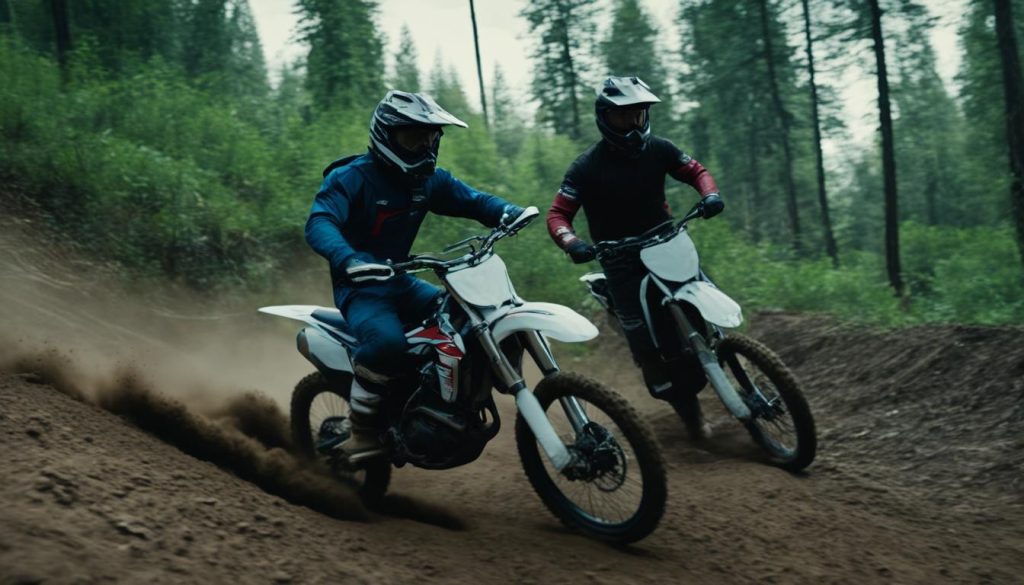
By mastering these basic dirt bike riding techniques, you’ll build a strong foundation for your skills and be ready to take on different terrains. Stay tuned for the advanced dirt bike riding tips in the next section.
Taking it Off-Road: Advanced Dirt Bike Riding Tips
So you’ve mastered the basics of dirt bike riding and are itching to take your skills off-road. Congratulations! It’s time to take on more challenging terrain and push your limits as a rider. But before you hit the trails, here are some advanced dirt bike riding tips to keep in mind:
1. Know Your Terrain
Off-road riding often means encountering different types of terrain, from rocky hills to sand dunes and everything in between. Before you start riding, make sure you’re familiar with the terrain and adjust your riding technique accordingly. For example, on loose gravel or sand, you’ll need to keep your weight forward to maintain traction, while on steep inclines, you’ll need to shift your weight backward to prevent the bike from stalling.
2. Handle Obstacles with Care
Off-road trails can be littered with obstacles, including rocks, fallen logs, and even water crossings. Approach these obstacles with caution and use the proper technique to handle them safely. For example, when crossing a water obstacle, keep your feet on the footpegs and maintain a moderate speed to prevent the bike from stalling. When tackling a rocky section, stand on the footpegs and keep your knees bent to absorb the impact.
3. Corner Effectively
Cornering is a crucial skill for off-road riding, as it requires proper balance and control. To corner effectively, you’ll need to use your body positioning to shift your weight and maintain control of the bike. Approach corners at a moderate speed and lean into the turn, keeping your outside foot on the footpeg and your inside foot extended outward for balance.
4. Maintain Control at Higher Speeds
As you gain confidence and experience, you may find yourself pushing the limits and riding at higher speeds. While it can be exhilarating, it’s crucial to maintain control of the bike to ensure your safety. Keep your body relaxed and maintain a firm grip on the handlebars, with your elbows bent to absorb any impact. Use your body positioning to maintain balance and control, especially when riding at higher speeds.
5. Stay Safe on the Trails
Off-road riding can be a thrilling and rewarding experience, but it’s essential to stay safe while exploring the trails. Always wear the proper riding gear, including a helmet, goggles, gloves, boots, and protective clothing. Don’t ride alone, and make sure someone knows your planned route and expected return time. Keep a first-aid kit on hand, and be mindful of other riders and hikers on the trails.
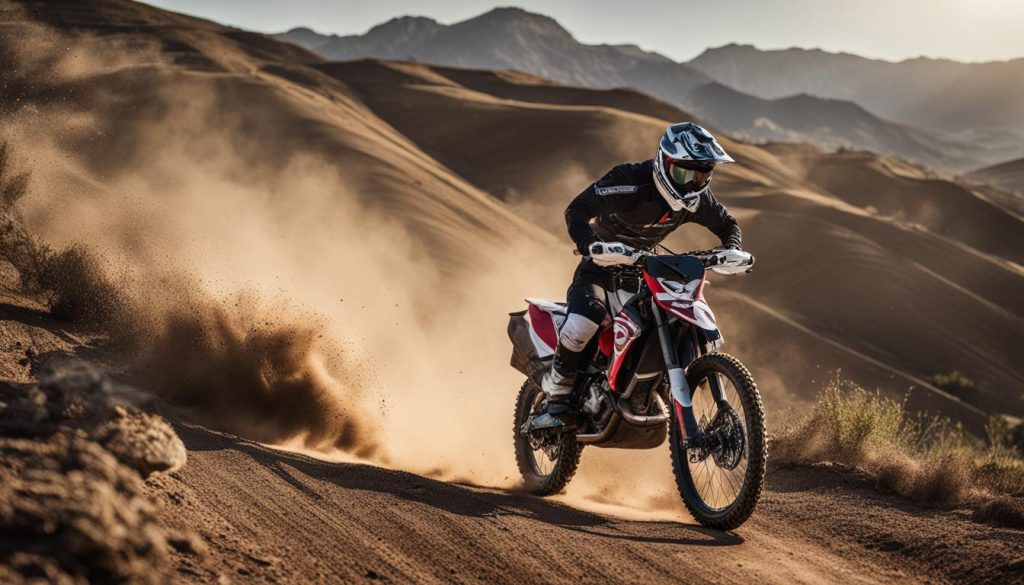
By following these advanced dirt bike riding tips and prioritizing your safety, you’ll be able to take your off-road riding skills to the next level. Remember to always practice and continue learning to improve your skills and stay safe on the trails.
Conclusion
As we conclude this guide, I hope you feel confident and ready to tackle the trails on your dirt bike. Remember, safety should always be a top priority, so make sure to equip yourself with the necessary gear and follow the rules of the road.
With the right techniques and a lot of practice, you’ll be able to master dirt bike riding like a pro in no time. Don’t be afraid to push yourself, try new things, and always continue to improve. The sense of adventure and excitement that comes with off-road riding is truly unmatched, so gear up and hit the trails!
Thank you for reading, and happy riding!
FAQ
How do I choose the right dirt bike for beginners?
When choosing a dirt bike for beginners, consider your height, weight, and skill level. It’s important to select a bike that you can comfortably handle and control. Visit your local dirt bike dealership or consult with experienced riders to get recommendations based on your specific needs and preferences.
What should I wear when riding a dirt bike?
When riding a dirt bike, it’s essential to wear proper gear for your safety. This includes a helmet, goggles, gloves, boots, and protective clothing like riding pants and jerseys. Make sure your gear fits well, is in good condition, and provides adequate protection against potential injuries.
How should I maintain my dirt bike?
Regular maintenance is crucial to keep your dirt bike in peak condition. This includes checking the oil level, cleaning or replacing the air filter, inspecting and tightening bolts, lubricating the chain, and ensuring tire pressure is correct. It’s also essential to follow the manufacturer’s maintenance schedule and make any necessary repairs promptly.
What are some common dirt bike riding techniques?
Some common dirt bike riding techniques include body positioning, throttle control, braking techniques, and maintaining balance while navigating different terrains. Learning these techniques and practicing them regularly will help you improve your riding skills and handle various riding situations with confidence.
How can I improve my dirt bike riding skills?
One of the best ways to improve your dirt bike riding skills is through consistent practice. Find a suitable riding area or track where you can challenge yourself and practice different techniques. Additionally, consider taking riding lessons from professional instructors who can provide valuable guidance and help you refine your skills.

